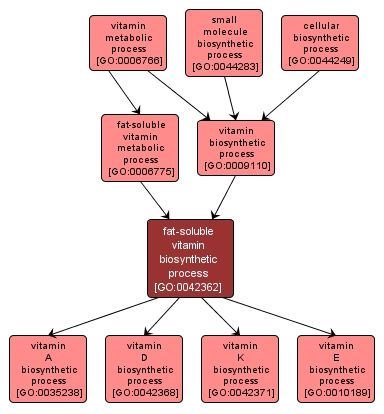GO TERM SUMMARY
|
| Name: |
fat-soluble vitamin biosynthetic process |
| Acc: |
GO:0042362 |
| Aspect: |
Biological Process |
| Desc: |
The chemical reactions and pathways resulting in the formation of any of a diverse group of vitamins that are soluble in organic solvents and relatively insoluble in water. |
Synonyms:
- fat-soluble vitamin formation
- fat-soluble vitamin synthesis
- fat-soluble vitamin biosynthesis
- fat-soluble vitamin anabolism
|
|

|
INTERACTIVE GO GRAPH
|














